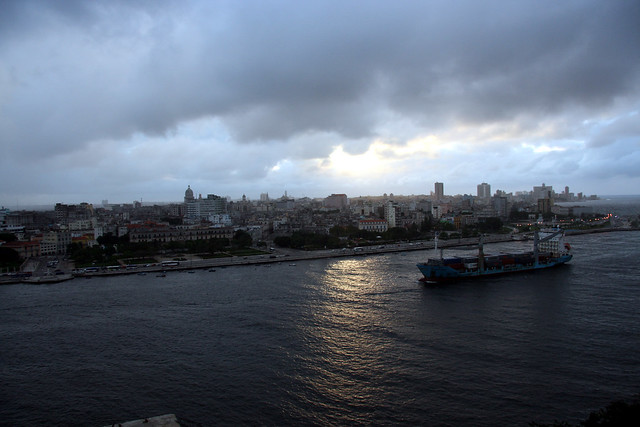Saturday, July 28, 2012
Port Of Havana, Cuba
Port of Havana is the main port in Cuba (not including Guantanamo Bay Naval Base, a territory on lease by the United States). Most vessels coming to the island make port in Havana. Other port cities in Cuba include Cienfuegos, Matanzas, Manzanillo and Santiago de Cuba.
The harbour was created from the natural Havana Bay which is entered through a narrow inlet and which divides into three main harbors: Marimelena, Guanabacoa, and Atarés.
As a harbor almost completely surrounded by shipping and industrial activities, the waters of the bay suffer from environmental stress. This in turn affects the water quality of the Caribbean Sea into which it flows.
Water entering the bay as river flows or effluent from industrial processes has a residence in the harbor of 8 days, on average. It receives approximately 48,000 m3 of waste water per day, which carries about 4,800 kg of nitrogen and 1,200 kg of phosphorus, which results in elevated concentrations of nutrients. Havana Bay is strongly affected by sewage dumping, and it also receives suspended solids, hydrocarbons, heavy metals and pollutants from agriculture, industry and port activities.
The leading sources of pollution in the bay have been identified as the Luyano River which contains organic material, nutrients, sewage, solid waste, the Regla oil refinery, fish hatcheries, and port activities. The high concentration of hydrocarbons, heavy metals and other pollutants is of concern as the harbor is an important fishing port.
Subscribe to:
Post Comments (Atom)



No comments:
Post a Comment